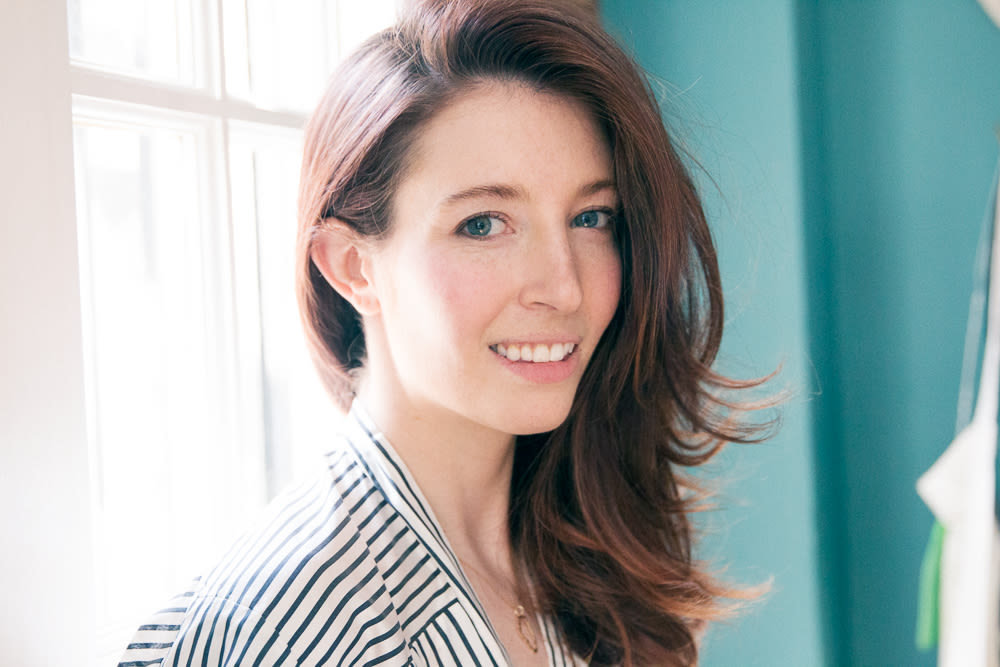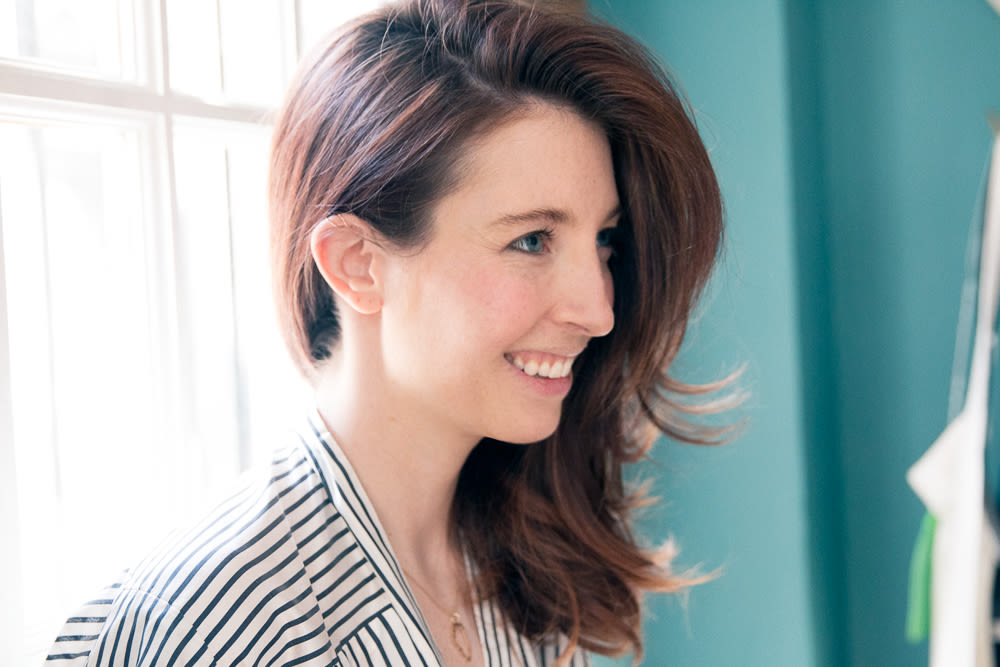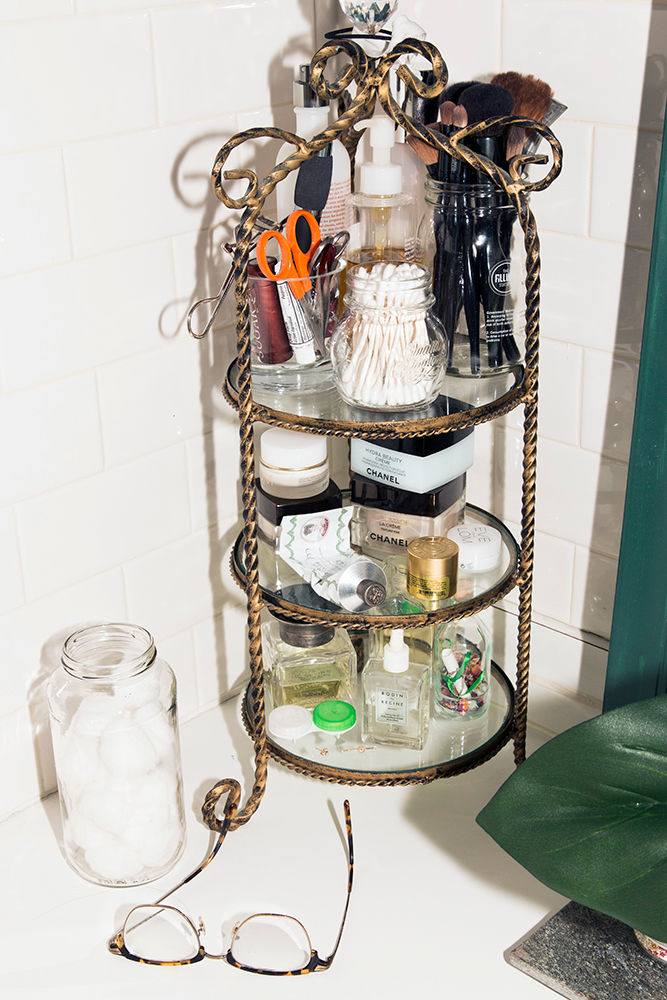'I remember being 3 or 4 and drawing pictures of all my friends in clothes with hair bows and teaching other girls how to draw dresses. My grandma was a fashion illustrator, so all of my memories are of drawing and painting with my grandmother and then taking art classes and being really into that. It definitely started that way, and whenever someone asked me what I wanted to do when I grew up, I told them I wanted to tell stories with fashion. I didn’t really know it, but I was actually talking about styling.
I went on to study fashion design at University of Cincinnati, which was a really amazing and intense program. It was five years, with internships every other quarter starting your sophomore year. I had seven internships before I graduated. That’s a lot, but normal for UC. My first internship was at Abercrombie & Fitch. I was so in awe of my mentor there—she was incredibly organized. She said to me, ‘Sarah, it’s practice. Keep your eyes open, listen, you’ll be this way someday, too.’ For anyone working in any industry, I think if they want to be really good at their job, they will be. I guess I kind of owe it all to that intensity and organization I saw there. I was only 18. I’ve really tried to construct each internship as a path forward—making sure that everything I did was teaching me something, and that it was a slow evolution to where I wanted to be, which was in working in styling for fashion magazines. I worked on set with Lori Goldstein, a trend forecasting company, an ad agency…When I graduated, I started working at Vogue, which was amazing because Grace Coddington was always a hero of mine. I was never her direct assistant, but I got to go on set with her as the fifth assistant. Honestly, just being able to see the way that these incredible women and stylists work was amazing. If you can keep your eyes open and pick up on the little things, you start to naturally develop your tool set.
I think I really tried to assist as much as I could when I was at Vogue. When editors came in and needed an extra set of hands, I was always volunteering to go and be that extra set of hands. I would go on set and work, then work some more.
It’s a huge industry with a lot of obstacles. You have to compromise and be open. There’s always that one dress from the runway that has to be everywhere, in every feature, but there’s only one. The logistics of the clothes are the most challenging aspects. It’s not just, ‘I want this, so I’m going to get it.’ You need to request it, and the brand needs to feel like your vision is an appropriate part of their vision. Then on the actual shoot day, all the work you’ve been doing for two or three weeks boils down to the elements. You have a vision, but you’re working with things that may or may not cooperate, so you have to figure out how to make it work. Things change—if you’re shooting outside, you only have so many hours of daylight or the weather might turn. Clothes are malleable—how does it move, fit, or look on the person wearing it?
My biggest moment in styling was probably when I got to work with Emma Watson for the Oscars. That was probably a moment in my life where I stepped back and thought, ‘Oh my gosh.’ I want to say that every moment needs to be handled as a big moment because that’s how you do your best work. I think every job sets me on a course to do better on the next job, but I really just had so much fun on that one. I love working with Emma. She’s inspired me to think about my career in a different way, so I’ve been determined in the last few months to try to open myself up to partners who are thinking about sustainable and ethical fashion. That's a side of the industry I want to support. I hope one day it will become the norm.
My latest venture is Cinematique, a touchable video platform that marries content and commerce all in a video. I met one of the founders of Cinematique at a random coffee shop when my iPad wasn’t working. I went up to this guy and said, ‘Excuse me sir, how did you get online?’ He looked at my iPad and couldn’t figure it out, but we got to talking, and I told him I was working at Vogue and was really passionate about storytelling and looking to do more. He said, ‘Oh, my buddies and I are working on a startup that makes videos touchable and saves the information for purchase at the end. We really want to get into fashion. Maybe you should come meet us.’ That’s how New York is.
So I went and met with them, and now I’m the Director of Brands and Partnerships. I think the challenge with Cinematique is that people have to think differently about video now. We’re really asking brands to totally reassess how they plan their video content, which is both challenging and exciting. Say you’re watching a music video and you really want to know where that top is from—you can click on the shirt and find out at the end. It’s making the credits touchable—it’s not just some line of credits at the bottom of a page. It’s the ultimate photo credit actually because the viewer is directly finding and exploring a brand. We’re putting all the pieces directly in the boutique space of this video. The goal is that all video will be touchable someday.
Styling and Cinematique work hand in hand to me in the end because both occupy a space in my mind where I’m thinking about how to use my learned tools in a way that’s most engaging and different. With styling, it’s important for me to stay really engaged in the fashion world, which then helps me to decide what has or hasn’t been done in the video world. I can then take that knowledge and ask brands if they’ve thought of incorporating this or that in their strategy. If anything, I’m assisting brands that already have such talent in their creative department to realize all the potential. We can do more.
I’m still learning to balance my work. At the same time, I’m a person. I’m passionate about education and would like to find ways to get education to more people. I’m grateful that my parents could raise me in a place that had such a great education system in Chicago. I went to public school, but a great public school. I know that’s not universally true across the world. I think my fatal flaw is that I can’t say no. I want to do everything I possibly can. I want to style this shoot and launch this start up, and I want to travel around the world and teach kids to read and hang out with my bunny rabbit. I want to do all that and be a good friend and, someday, be a good mother. I want to have a career, and when I look back, feel I’ve accomplished something. If I can someday feel that I’ve helped other people to get onto a career path that they feel passionate about, which they didn’t think was possible to accomplish before, then I think I’ll be really happy. I’m still trying to learn how to balance it all. Make no mistake, it’s hard, but I like the push.”
—as told to ITG
Sarah Slutsky photographed by Tom Newton. Read more about the careers of Peter Som, Joe Zee, and The Skimm Co-Founders Danielle Weisberg and Carly Zakin in The Professional.










